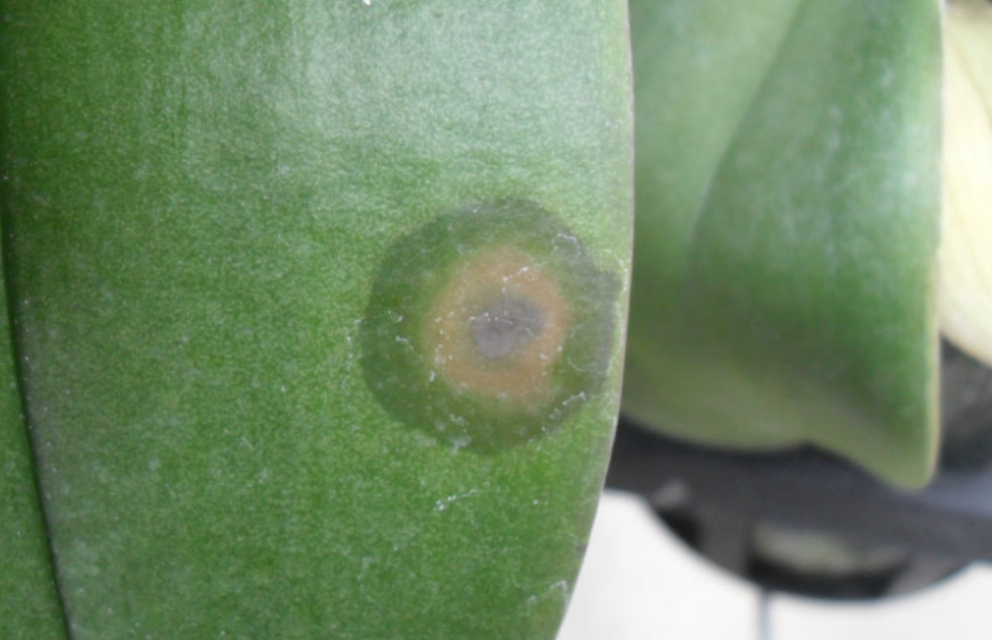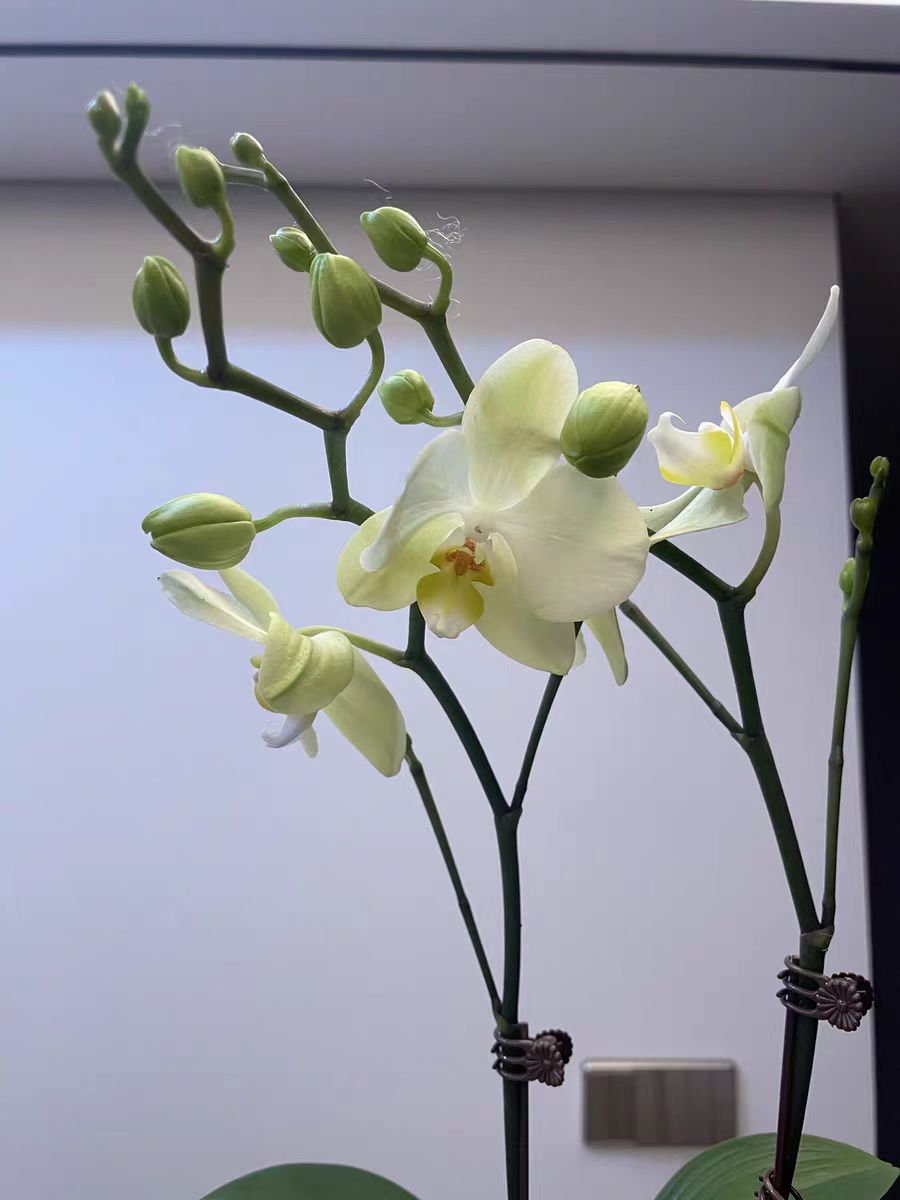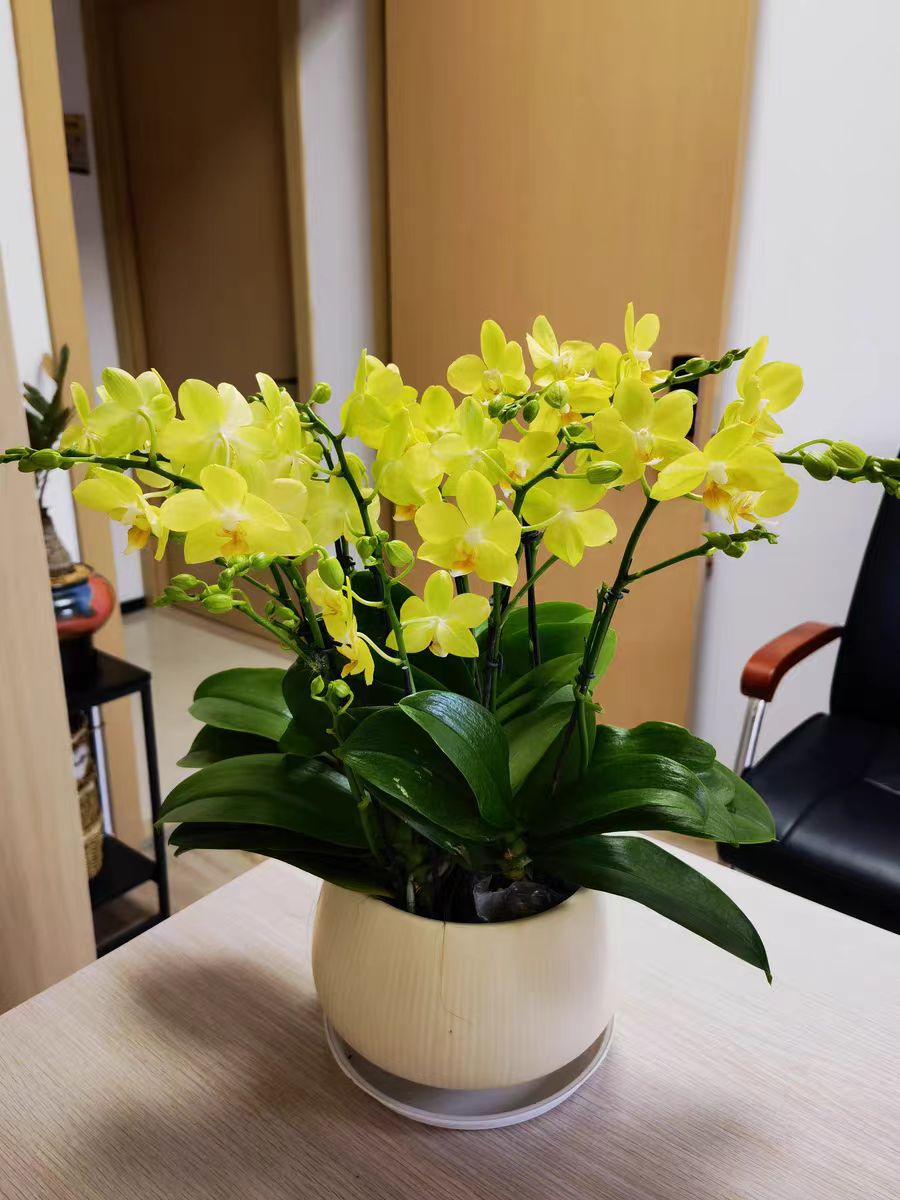As a flower enthusiast who loves Phalaenopsis deeply, the most feared thing is the threat of pests and diseases during its growth process. Today, let's talk about the new virus of Phalaenopsis, "anthrax disease".
Anthrax disease is characterized by being dark and looking like it has been burned alive. Perhaps because of this, there is a "charcoal" character in its name. Also, its characteristic is that the shape of the disease spot is circular and in circles. If it decays particularly severely in the later stage, the center may even perforate the entire leaf.
Anthrax disease is caused by a fungus called Colletotrichum gloeosporioides. The main cause of the disease is staying in an unventilated place for a long time or in a place with high temperature and high humidity, which can trigger the anthrax pathogen. Therefore, it is also a common disease. The best way to deal with it is not to spray pesticides because usually when spraying pesticides, you need to mix them with water or use a spray method. If the water mist forms and cannot be ventilated and dried in time, it will instead cause other disease spots. Therefore, it is best to directly cut off the leaves infected by the pathogen because once anthrax disease forms, it is basically impossible to recover. Cutting it off can better prevent it from infecting other healthy leaves. Also, when throwing it away, do not throw it near the flowerpot. Throw it far away, preferably in kitchen waste and deal with it on the same day.
In addition, there is no need to worry too much about anthrax disease in Phalaenopsis. Although this disease is highly contagious, it is not like soft rot disease that can rot the entire plant at once. At most, there is a black lump on the leaves and it does not immediately affect the life of the plant. As long as flower enthusiasts discover it in time and cut it off promptly, the problem can basically be solved.
In general, although Phalaenopsis likes a humid environment, it cannot be overly watered or placed in a space with excessive air humidity, nor can it be placed in a poorly ventilated environment. In addition, attention should also be paid not to apply too much nitrogen fertilizer to it because this will reduce the resistance of Phalaenopsis. After confirming that the plant has wounds, they should be cut off promptly to avoid spread.
Prevention and control of anthrax disease of Phalaenopsis

Share with
Tagged in :




Leave a Reply